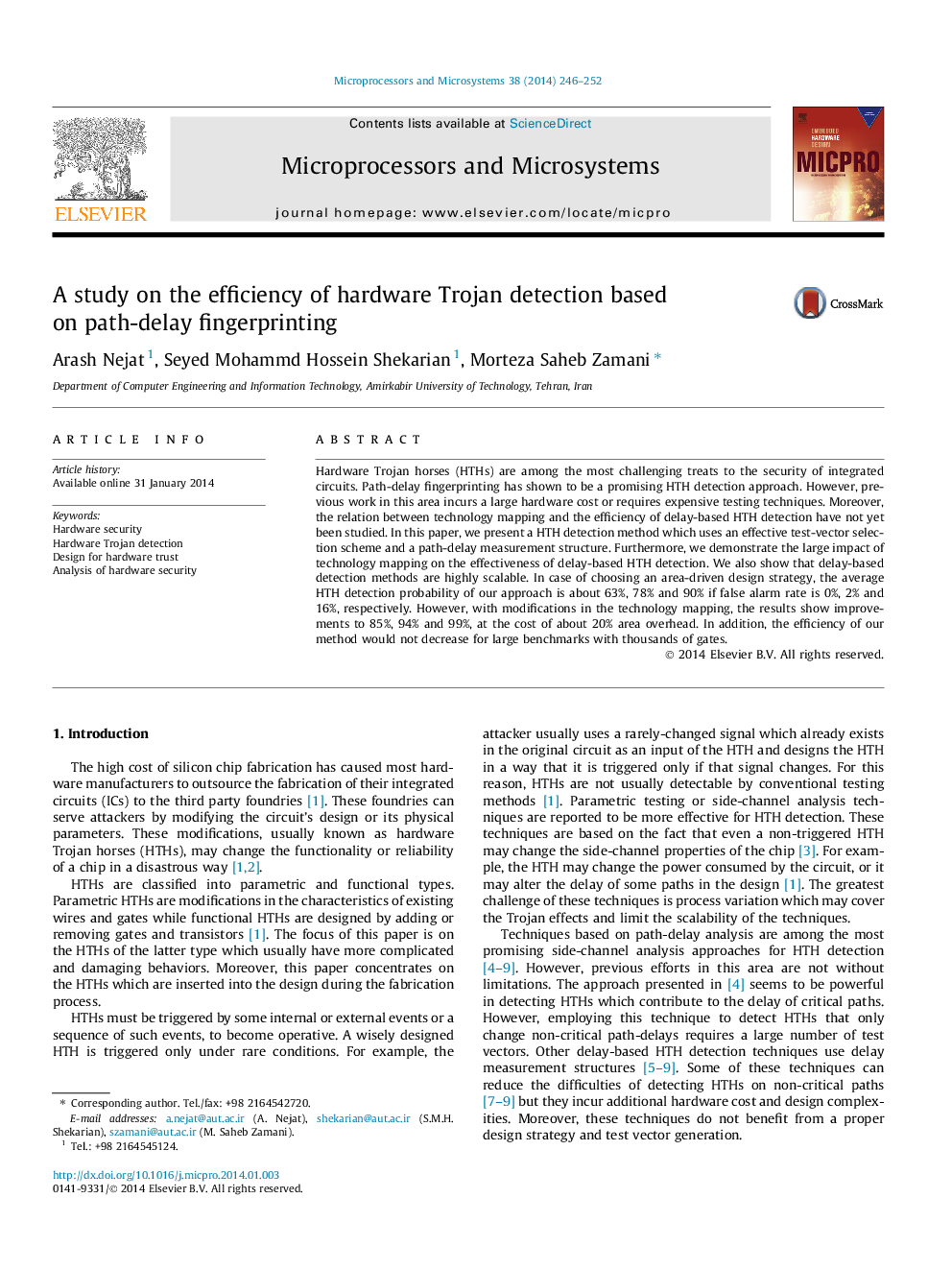| Article ID | Journal | Published Year | Pages | File Type |
|---|---|---|---|---|
| 460955 | Microprocessors and Microsystems | 2014 | 7 Pages |
Hardware Trojan horses (HTHs) are among the most challenging treats to the security of integrated circuits. Path-delay fingerprinting has shown to be a promising HTH detection approach. However, previous work in this area incurs a large hardware cost or requires expensive testing techniques. Moreover, the relation between technology mapping and the efficiency of delay-based HTH detection have not yet been studied. In this paper, we present a HTH detection method which uses an effective test-vector selection scheme and a path-delay measurement structure. Furthermore, we demonstrate the large impact of technology mapping on the effectiveness of delay-based HTH detection. We also show that delay-based detection methods are highly scalable. In case of choosing an area-driven design strategy, the average HTH detection probability of our approach is about 63%, 78% and 90% if false alarm rate is 0%, 2% and 16%, respectively. However, with modifications in the technology mapping, the results show improvements to 85%, 94% and 99%, at the cost of about 20% area overhead. In addition, the efficiency of our method would not decrease for large benchmarks with thousands of gates.
